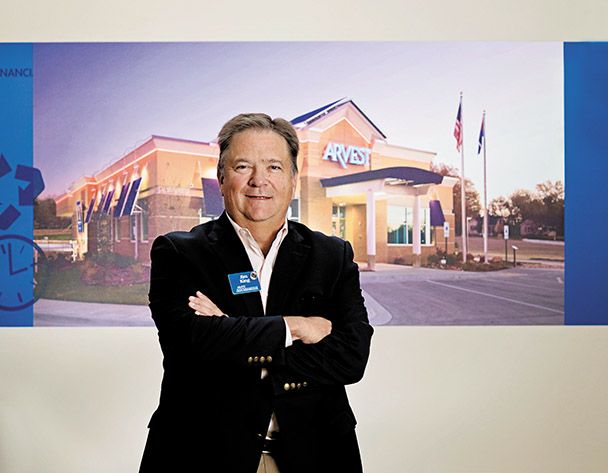Market-Value Milestone
by October 12, 2015 12:00 am 339 views

The origin of what is today known as Arvest Asset Management can be traced back to the 1970s.
AAM, headquartered in Lowell, is the wealth management division that is owned by Walton family-owned Arvest Bank of Fayetteville. The bank initially delivered trust services through its individually chartered banks in the 1970s, and by the end of the decade, both Bank of Bentonville and First National Bank & Trust in Rogers each were managing trust assets of about $3 million.
Three decades later, AAM is on the cusp of a company milestone: $10 billion in assets under management.
President and CEO Jim King said during a recent interview that as of Sept. 1, AAM was at approximately $9.2 billion in AUM in its trust, insurance and brokerage businesses. That’s an increase of 75 percent in the last six years, which means AAM should hit the $10 billion mark sooner rather than later.
And, when combined with the bank’s assets of $15.4 billion as of June 30, that gives the bank’s holding company, Arvest Bank Group Inc., nearly $25 billion in assets.
King, an AAM employee for 13 years and the chief executive since March 2011, spoke quite candidly during a recent interview about where the company is, and where the potential lies for greater success.
The strength, he said, results from being a part of Arvest Bank, already the largest bank in Arkansas, and beginning to grow in new markets like Kansas City and Springfield in Missouri, and Tulsa and Oklahoma City in Oklahoma.
“Ten billion is obviously a big number, but there’s a lot more customers that we can help,” he said. “The real opportunity is how much we can continue to serve Arvest Bank and its customers.”
AUM Breakdown
King, a 56-year-old Oklahoma native, described AAM’s business philosophy as helping people find financial solutions for life.
“That is the mission of the bank, and [AAM] is no different,” he said.
AAM has approximately 280 employees who offer advice to customers in three lines of business:
• Arvest Trust Co., with more than 3,100 customers and about $3.1 billion in AUM;
• Arvest Investments Inc., a wholly owned subsidiary of the bank with about 30,000 customers and $5.6 billion in AUM; and
• Arvest Insurance Co., also a wholly owned subsidiary with more than 1,500 customers and about $450 million in AUM.
Arvest Investments was incorporated in 1996, but was originally formed as Investment Management Group in 1984 by Alice Walton, Sam Walton’s daughter. After it was incorporated, Arvest Investments became a full-service broker dealer, and is the largest broker dealer in Northwest Arkansas when ranked by the number of licensed agents in the six-county market area. (See list on Page 20).
Arvest Trust was formed in 1990 when five separate trust divisions of Arvest Bank Group were combined.
Arvest Insurance was formed in 1997, offering fixed annuities and different lines of insurance to Arvest customers, and the bank began the process of unifying the three business segments under one umbrella at that time.
The name Arvest Asset Management was officially registered in 1999, and the three separate lines of business were consolidated under a single management team. A compensation structure was also created to give sales associates even more incentive to place each customer with the product and service most suited to them.
Moving Forward
King said that by and large, customers look to AAM for advice on retirement planning, noting that the company has created more than 9,600 retirement plans since 2004.
“Of our brokerage customers, it’s probably 80 percent of our business,” he said. “Helping our customers plan for retirement is probably the most important thing we do.”
Retirement planning will continue to be a focus moving forward, as will being a bigger part of what Arvest Bank is doing.
King said the sizable Arvest footprint now encompasses about 770,000 households. AAM has customers in about 30,000 of those homes. That equates to a substantial number of prospects for uninsured investment products through Arvest Asset Management.
“In a mature bank brokerage program, household penetration of 10 to 12 percent is really good,” King explained. “In Benton County and Northwest County, we’re probably at about 8 percent, but there’s a lot of opportunity in emerging markets.”
